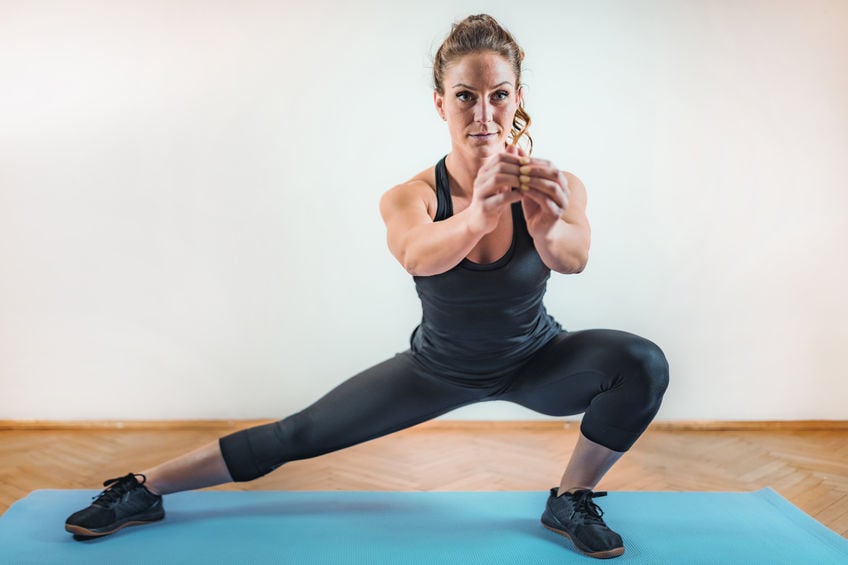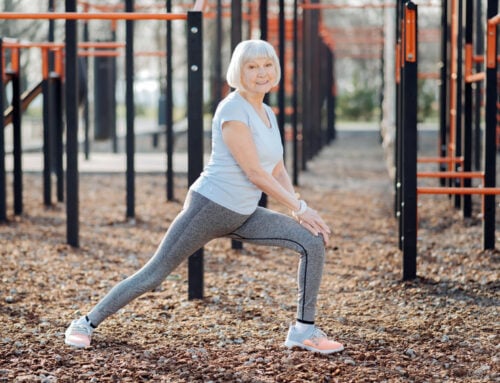There’s A New Joint In Town
Often a person having total knee replacement surgery has experienced pain that has limited activity and exercise before the surgery. That leads to weakened supporting muscles before the surgery is even done. The result is a new joint but a lengthy recovery time. Consistency in performing a guided exercise program is the answer to a successful and shortened recovery time.

Cheering you on
A key partner in recovering from TKR is a physical therapist (PT). The PT educates the patient on the correct performance of exercises and guides progression in the duration and intensity of activities. All this is done with oversight from the physician. The PT is also often the patient’s cheerleader, motivating, and encouraging if the road gets a little bumpy.
Get up and get moving
After a knee replacement, the patient is strongly encouraged to get up and move almost as soon as the anesthesia wears off. Early mobility is key to the prevention of blood clots, which is a risk of lower extremity surgery. Getting up and moving is also crucial in reducing swelling, which will hinder range of motion.
Where’s the shortcut?
Consistently performing the exercise program as directed by the physician and PT is vital to a shortened and successful recovery. Generally, TKR patients will have therapy 2 or 3 times weekly but must continue exercises several times daily at home. Different tasks may be used to target specific areas of weakness; however, consistently doing a few exercises will speed the TKR recovery.
Quadriceps sets
Lying flat with legs straight, tighten thigh muscles, pressing the knee down. This exercise will build quadriceps muscles as well as extend the knee joint. Quad sets may seem simplistic, but completely straightening the knee after replacement surgery is not easy. Tightening and releasing the quad muscles builds the strength needed for joint stability, so don’t skip out on this exercise.
Straight leg raises
Again, lying flat with legs straight, raise the affected leg several inches. Hold for 5-10 seconds then slowly lower. As strength returns to the thigh muscles, ankle weights may be added, and hold time can be increased.
Heel slides
This exercise focuses on bending the joint and definitely will be difficult early in the recovery. Lying flat with legs straight, slide the heel of the surgical leg toward the buttocks, bending the knee joint. A sheet may be placed around the foot, and the ends pulled to assist in moving the leg.
Ankle pumps
As the recovery progresses, this exercise may be dropped and replaced with something more challenging. However, initially, ankle pumps are essential to increase blood flow and prevent clots and other complications. Lying flat with legs straight, bend and straighten the ankles while keeping the rest of the leg relaxed.
Short arc quads
A final exercise that builds quadricep muscles in the short arc quads. Lie flat with a small towel or blanket rolled under the surgical knee to keep the joint slightly bent. Slowly lift the heel off the surface and hold the position for 5-10 seconds then lower. This exercise can also be made more challenging by adding ankle weight as the recovery progresses.
When therapy ends, the recovery continues
Physical therapy visits will eventually end, but recovery from TKR will continue for several months. Developing an ongoing exercise plan with the physical therapist before that time comes is essential. Also, finding a physical activity that is enjoyable and beneficial is important. A new joint can re-open many activity doors, so pick one and get moving. For more information about recovery from joint replacement surgery, speak with an orthopedic specialist or physical therapist.



